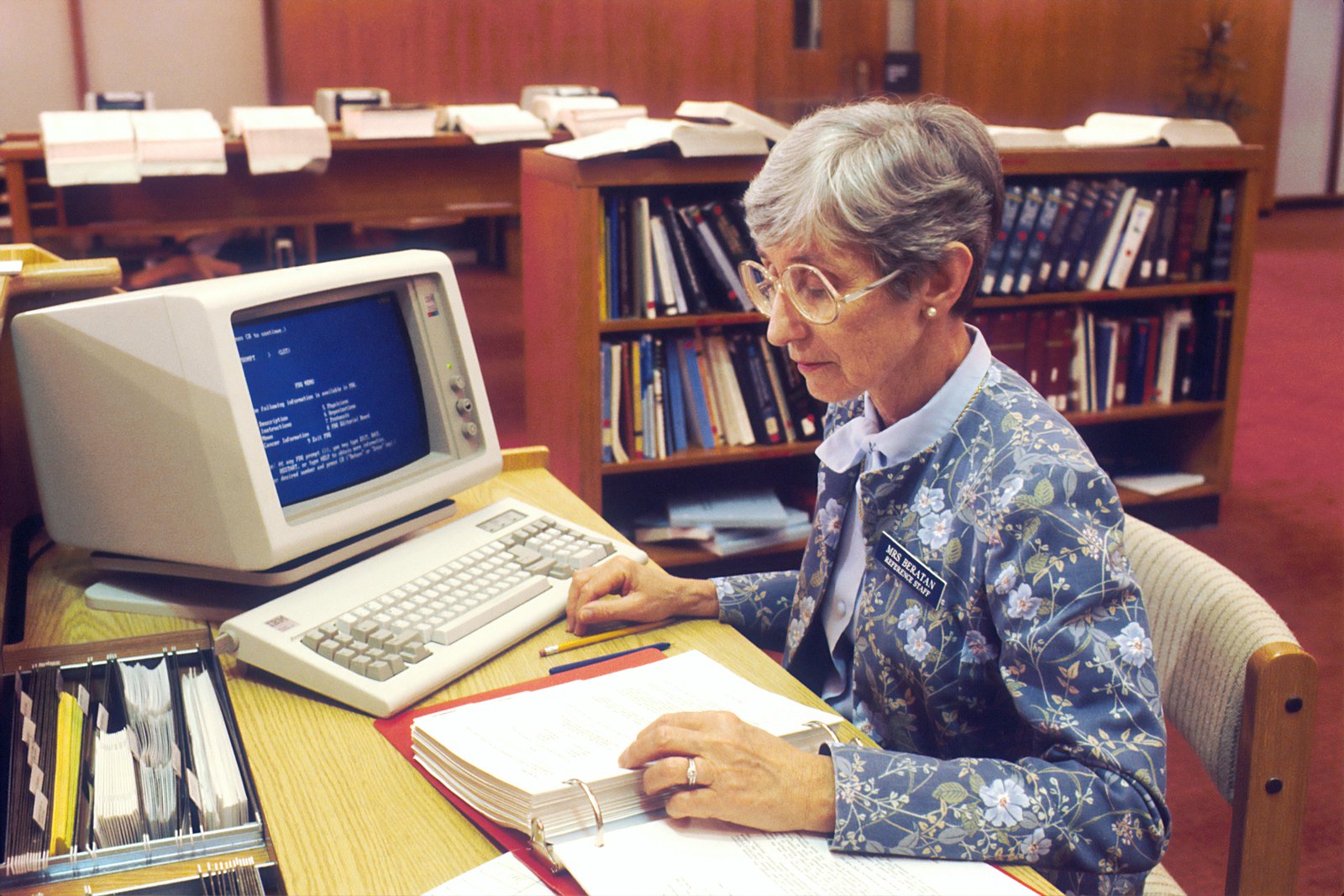⚠️ Heads up: This is a long post. Grab a coffee and enjoy the ride!
🌱 Chapter 1: The Spark
I was born and raised in a laid-back town in Eastern India. My father worked for one of the largest and oldest banks in the country. As a forward-thinking institution, the bank was keen to implement the latest technologies available at the time. In the 1990s, computers were just beginning to make their presence felt in the country. Banks and the railways were among the first organisations to adopt them, driven by the need to handle millions of customers efficiently.
When computers were first introduced, employees who held traditional roles—like underwriters or customer service personnel—were offered free training and courses in programming, should they be interested. The bank had brought in computers to digitise their ledgers, streamline account operations, and reduce manual errors. Yet, not everyone was on board. There was considerable resistance from employees and unions, fearing that computers would take away jobs—a narrative not too different from today’s debates around AI.
My dad, a Mathematics major with a deep interest in Algebra and Calculus, enrolled in a few programming courses offered by the bank. He dabbled in FORTRAN and BASIC, driven by both curiosity and opportunity. Though the bank had hired consultants for technical implementation, they were also committed to re-skilling their own workforce.
However, life had other plans. Around the time my younger sister was born in 1993, my dad had to take on more responsibilities at home, and the programming lessons took a backseat. But his interest in computers didn’t fade entirely. That was also when he discovered computer games—classics like Paratrooper and Pac-Man, running on old DOS systems. He was fascinated, and he thought I, his young son, might be fascinated too.
One day, he took me to his office to show me the games. He even tried showing me some FORTRAN code, but all I could focus on were the games. I was mesmerised. The IBM computer was unlike anything I’d ever seen before. We had a TV, a VCR, a radio, and a landline phone at home, but none of them felt as alive, as limitless, as this machine that could build.
Back home, I couldn’t stop thinking about it. I was obsessed. I had never encountered a machine that could go beyond its pre-programmed instructions. I didn’t yet understand the full potential of a computer, but I felt it. It was the first time I realised that machines could be built to build.
This wasn’t entirely new behaviour for me. I had always been fascinated by gadgets. I remember the day I discovered that our cassette player could record audio using its built-in microphone. That revelation led me to overwrite some of my parents’ favourite music cassettes with my own songs and ramblings—and to getting grounded when they found out. My access to the audio player was revoked, but my interest in machines only grew stronger.

Interestingly, a similar story was playing out just a town away. My cousin, who was almost the same age as me and my best friend since we learned to talk, was going through the same phase. His father also worked at the same bank and had introduced him to computers. We both dreamed of growing up to become geeks, tinkering with electronics and digital machines.
I begged my dad to take me to his office after school so I could spend more time on the computers. Back then, computers were prohibitively expensive; owning one was out of reach for most middle-class households. So my time in my dad’s office became my gateway to this magical world. I played more games, learned basic DOS commands, and my dad showed me how to read manuals. I still vividly remember the thrill of typing my very first DOS command: DIR.
🏫 Chapter 2: The Classroom Revolution
In 1998, when I was in 4th grade, my school introduced computer classes. We had just one 30-minute theory and one 30-minute practical class per week. It wasn’t part of the official curriculum, so there were no exams—just an attempt to build interest. India was already making headlines globally for sending brilliant software engineers abroad, and schools were beginning to respond to that momentum.
Not all students were interested, though. We were taught DOS, and then Windows 3.1 and 95. But for me, seeing a GUI-based OS felt like falling in love with the machine all over again. Using a mouse for the first time made everything feel intuitive—it no longer needed a manual.
We had books that introduced BASIC and a fun language called Logo that helped generate graphics. By 8th grade, we were exploring C programming.
Still, we couldn’t afford a computer at home. Apart from gaming or the occasional spreadsheet, it seemed to offer little value for education. Plus, tech careers were so new that most people didn’t realise the potential they held.
I kept waiting eagerly for my weekly computer classes. I also saved my pocket money to spend at cybercafés playing games. Many kids had early console systems at home—TV-connected devices with controllers that resembled a primitive PlayStation experience.
Because the subject wasn’t graded, most students didn’t take computer classes seriously. Only a handful of us who were passionate stayed engaged. Eventually, my interest in programming gave way to gaming.
🕹️ Chapter 3: The Detour
In late 2001, when I was in 10th grade, my dad finally bought me my first PC. It was a HP computer with 256 MB of RAM. It cost around $700 then, which would be about $1,200 in today’s money.
The moment I got that computer, I dove headfirst into gaming. I played Counter-Strike, Prince of Persia, and Grand Theft Auto endlessly. When we got internet access—first through a 64 kbps dial-up connection, and later with a “blazing-fast” 512 kbps broadband connection—a whole new world opened up.
When we grew older, and my cousin and I met, we would talk endlessly about tech (based on whatever little was available at the time). We had both subscribed to a tech magazine called Digit. The magazine was about four times more expensive than the regular monthly Reader’s Digest, but I convinced my dad to buy it for me every month. In its early years, Digit was highly educational, filled with tutorials and deep dives into tech. Over time, it became more commercial, loaded with advertisements for gadgets, graphics cards, and software. But one thing that kept me hooked were the free CDs and DVDs included with each issue—packed with games, software trials, drivers, and other digital goodies.

I got into early social media: Orkut, AOL Messenger, and MySpace. I made new friends, joined online forums, and explored the fun, chaotic side of the internet. But along the way, I lost touch with programming. The addictive part of technology had taken over.
I was no longer creating—I was consuming.
This detour lasted a while. It was a different kind of digital immersion, one that still taught me things but moved me away from the builder mindset I had as a child.
🔁 Chapter 4: Rediscovery
After I graduated from school, I began to remember my early love for programming. So when it came time to choose a course for college, I picked Computer Science without hesitation. I enrolled in a nearby college and entered my first year eager to learn and meet new people. The campus was lively, filled with students from different states and backgrounds, and I spent a lot of time soaking in the new environment—lounging on sprawling campus lawns, hanging out in the cafeterias, and getting to know everyone.
I was doing really well in my C programming class. I loved how things could be solved in a structured, almost mathematical way. Functional programming made sense to me. On the other hand, I found object-oriented programming intriguing but unnecessarily complex. The idea of moulding every solution into classes and inheritance trees felt forced at times. Still, I explored C++, then Java, and tried to understand their place in the growing world of software.
What truly resonated with me, though, was SQL. I found databases fascinating—finally, here was a robust, structured way to persist data. It frustrated me that connecting C programs to a database was such a painful task. Most of the time, I stuck to storing data in flat files.
And then, one day, everything changed.
What I am today is because of that one day—and the person I met.
💡 Chapter 5: The Turning Point

That day, I met a senior on the campus lawns—a person who would unknowingly change the course of my career. Unlike most students, he was already running a software development agency while still in college. He was building websites and content management systems for clients in the US and had a network of freelancers working with him remotely.
I struck up a conversation with him about my passion for building command-line programs in C. I shared my struggle: I could build things, but it was hard to distribute them, and I still didn’t have a clean way to store data beyond flat files.
He listened patiently, smiled, and said, “Try this—I think it will solve all your problems.”
He told me about a free weekend bootcamp happening in the city, where students were being taught web development: HTML, CSS, JavaScript, and PHP. All I needed was to bring my own laptop.
I took his advice and went.
The bootcamp blew my mind.
Day 1 was all about building basic web pages using HTML and CSS. By the end of the day, we had even registered a domain name and hosted our work on a free shared hosting service.
Day 2 introduced us to dynamic web applications with PHP and the LAMPP stack. Suddenly, all the problems I had—distribution, data storage, usability—had clear, elegant solutions.
PHP felt like a natural extension of C, and I picked it up quickly. I bought a thick PHP book—almost 800 pages of API documentation—and carried it everywhere. Along with my laptop, that book became my constant companion.
I started building one web page after another, pulling all-nighters, lost in this new world of possibilities. Eventually, I created a web-based attendance tracking system for students. It allowed them to log classes attended, track missed lectures, and even leave shared notes or comments for others to read. The idea came from noticing how often students struggled to keep track of attendance—something that could impact their ability to sit for exams.
Around that time, I also entered a website design contest run in a popular web development forum. The designs were judged by vote from forum members. My entry was minimal and futuristic—and it won. That experience gave me a big confidence boost and pushed me further toward minimalistic, thoughtful design. Later, I even went on to win design hackathons in other universities.
The app took off. People loved it. Students from other streams started calling me “the hacker guy.” I wasn’t hacking, of course—I was just building. But the nickname stuck. And with it came a new identity, a new purpose.
🍏 Chapter 6: Becoming “Jobs”
After the bootcamp, I continued building small tools using PHP and the LAMPP stack. Some of them were functional; some were just playful experiments that didn’t go anywhere. But I loved the process of creation.
That summer, I landed an unpaid internship with the college’s admin department. They were building a student management system using PHP to store and manage personal information for students. It wasn’t glamorous work, but I learned a lot—especially about working on live systems and understanding how real-world applications are maintained.
Around this time, I became a massive fan of Steve Jobs. I was blown away when I first saw a MacBook and the iPod. Their elegance, simplicity, and attention to detail captivated me. I read everything I could about him, and even watched the movie Pirates of Silicon Valley. I talked about Jobs so much that people around campus started calling me “Jobs.”
I was also becoming fascinated with the internet in general. We didn’t have smartphones back then—just old Symbian-based Nokia feature phones. Browsing the web on those was painful, but Opera Mini made it bearable. I was so impressed that I joined the Opera Campus Crew, a student ambassador program where I promoted the browser on campus. I installed Opera Mini on friends’ phones and demoed how fast it was. Opera rewarded me with merch and goodies, which I wore proudly around the campus.
For my final year dissertation, I built and deployed a fully hosted PHP web app that allowed users to review their favourite motorcycles. It took me nearly a year to build. I hand-coded everything: authentication, a CMS backend, an autocomplete search bar, and a custom-built commenting system. Every bit of it was done from scratch, and I loved every moment of it.
“Stay hungry, stay foolish.”
— Steve Jobs, 2005 Stanford Commencement Address
After graduation, I worked for software agencies building products for American clients. Eventually, I moved abroad and worked with startups.

Looking back, I owe everything to that one random afternoon on the college lawn—the day I met a senior who pointed me in the right direction. That small nudge is the reason I’m doing well today as a Frontend Engineer.
🎯 Conclusion: A Journey Worth Taking
Looking back on this journey—from that sleepy town in Eastern India to classrooms filled with CRT monitors, from the thrill of my first DIR command to late nights debugging PHP, from cybercafés to Opera swag, and eventually, to building real-world software for global startups — it feels like everything unfolded exactly as it was meant to.
What started as curiosity became obsession. What felt like a detour led me to rediscover my path. And what seemed like a random encounter with a senior on a college lawn became the moment that shaped the rest of my life.
Today, as a Frontend Engineer, I still hold onto that childlike wonder. The magic of seeing something you’ve built come to life—on a screen, in a browser, for people to use and benefit from—that feeling never gets old.
And it all began with that strange, beautiful machine my father showed me back in the 90s.
We never know which spark will catch fire. But I’m endlessly grateful that mine did.
Thanks for reading. If this story resonated with you, feel free to share your own journey or drop me a message — I’d love to hear it.


